Rolex Replica Weight & Size Guide | Identify Genuine vs Fake Rolex Watches
Did you know? There are more counterfeit Rolex watches worldwide than authentic ones — a surprising fact that reveals how widespread fake Rolexes have become. This flood of knockoffs not only confuses buyers seeking genuine Rolex timepieces but also undermines the reputation of high-quality replica Rolex watches, since many cheap fakes are poorly crafted.
As one of the top suppliers of Rolex replica watches, we provide a range of options—from affordable replicas to premium super clone-grade models. While it’s exciting to see numerous Rolex-inspired watches available, we firmly stand against low-end counterfeits that harm the entire replica watch market.
In this guide, we’ll highlight the key differences between authentic Rolex watches and our replica offerings. We won’t focus on the poorly made fakes because the disparities there are obvious and affect everything from build quality to weight, dimensions, and finish. Instead, we’ll center on our collection, showcasing both budget-friendly replicas and top-tier super clones.
Explore Rolex Super Clone Collections
- Rolex GMT-Master Super Clone
- Rolex Daytona Super Clone
- Rolex Submariner Super Clone
- Rolex Yacht-Master Super Clone
- Rolex Sky-Dweller Super Clone
- Rolex Explorer Super Clone
- Rolex Air-King Super Clone
- Rolex Day-Date Super Clone
- Rolex Sea-Dweller Super Clone
- Rolex Datejust Super Clone
- Rolex Oyster Perpetual Super Clone
Can You Spot a Fake Rolex?
Before we dive into the six key ways to tell, let’s put your eye to the test. Below, you’ll see images of real and fake Rolex watches—click on the one you think is authentic.
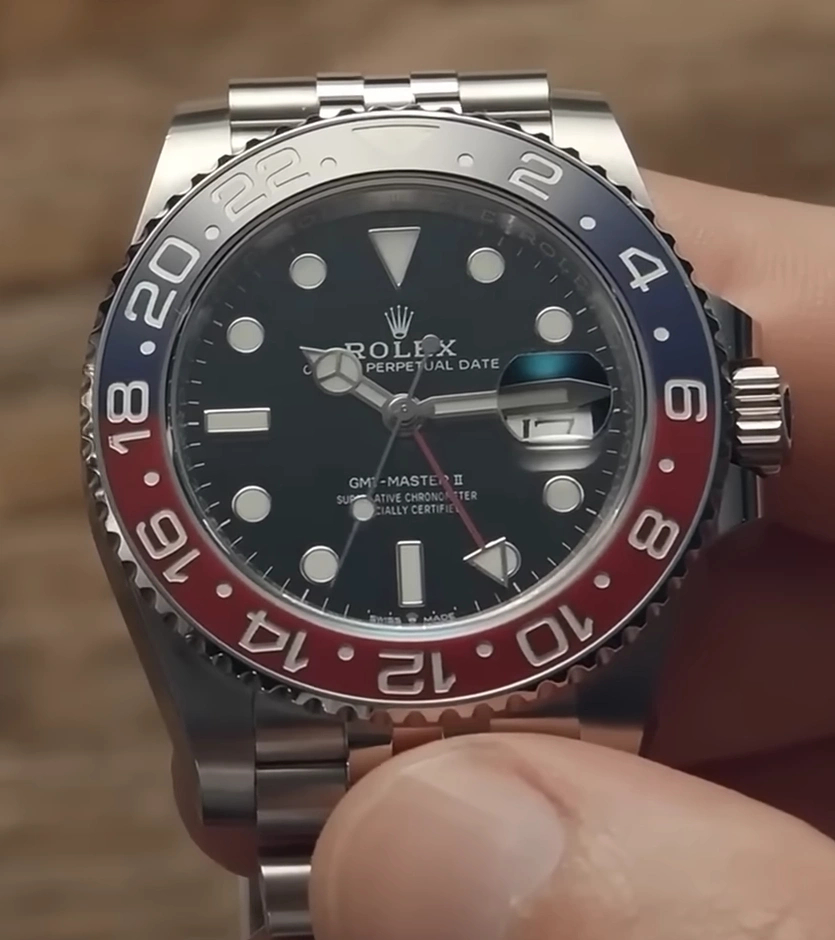
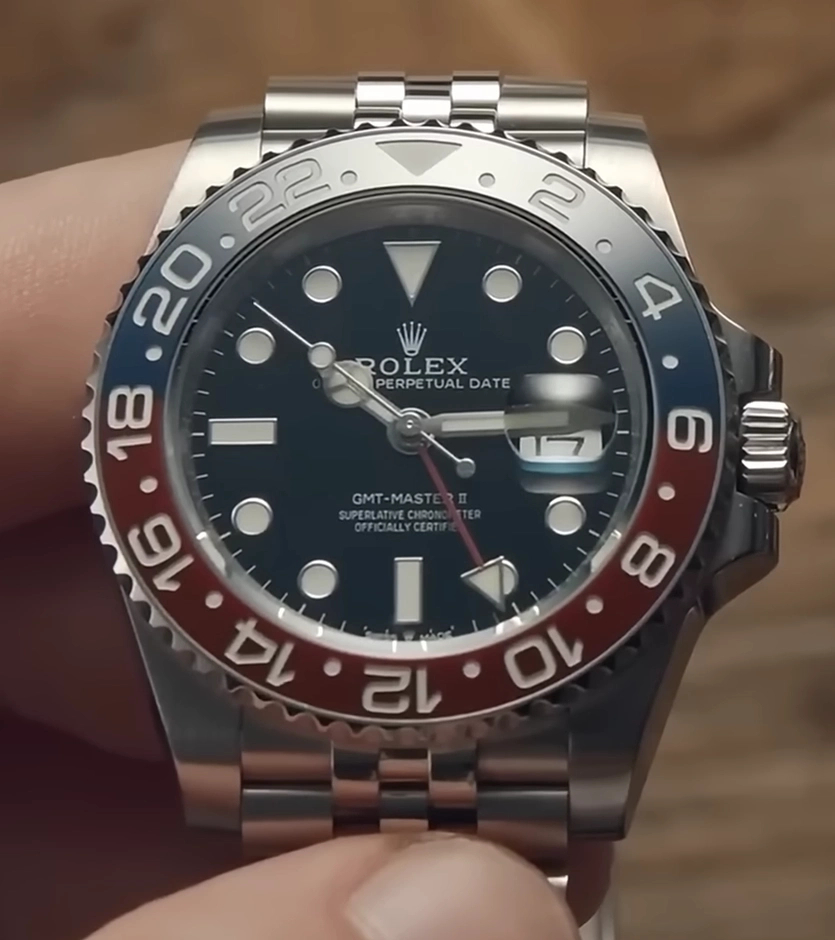
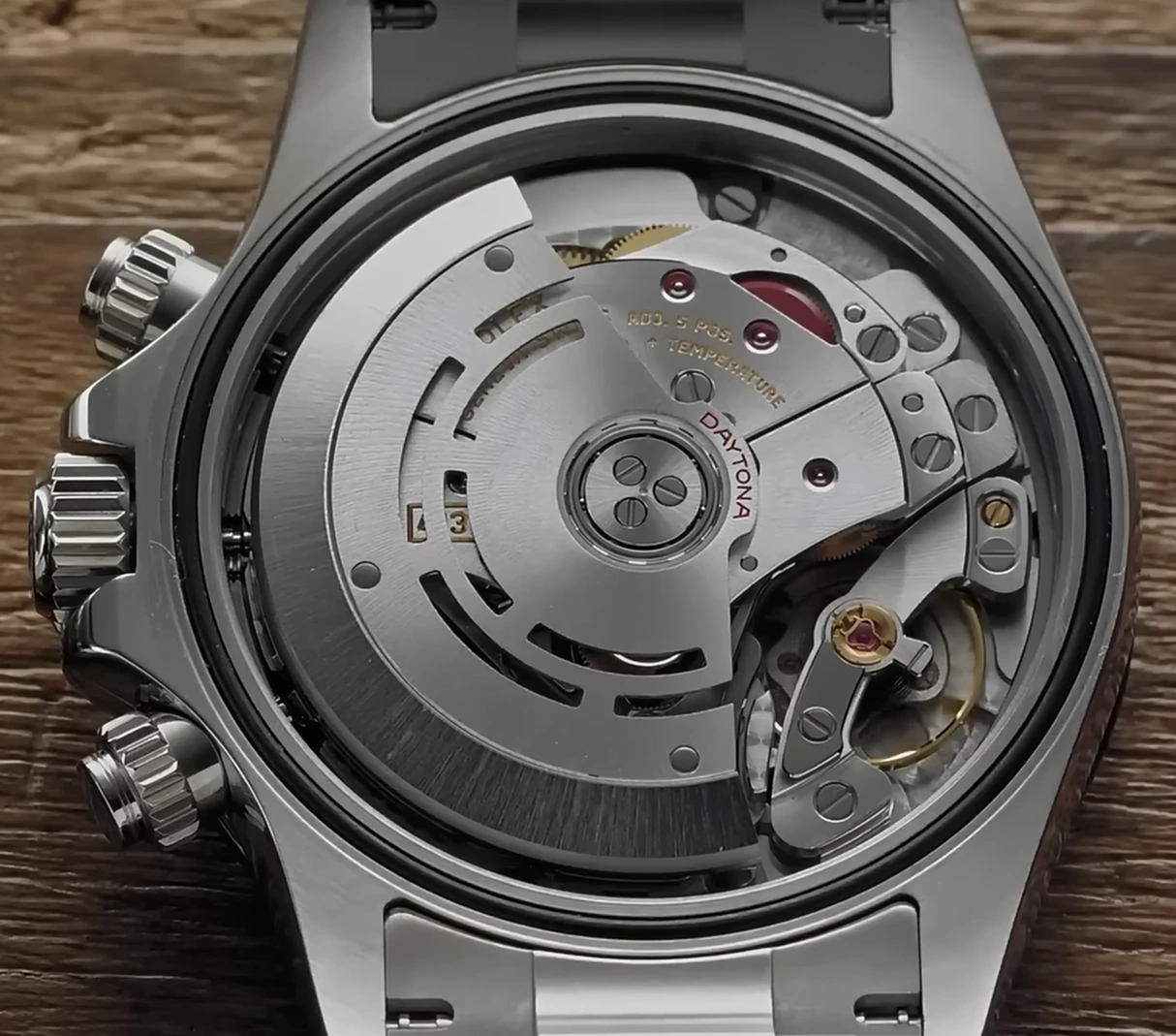

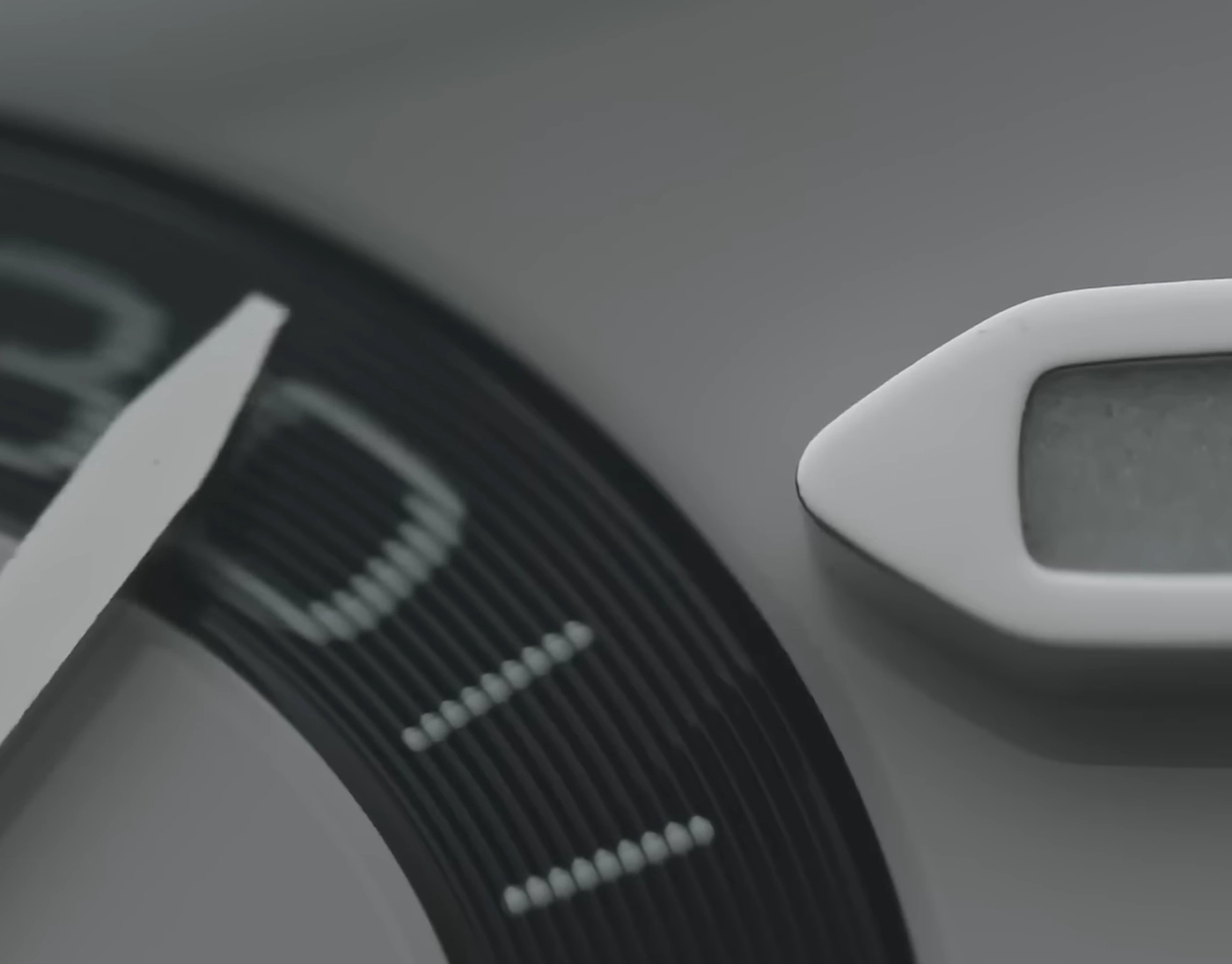

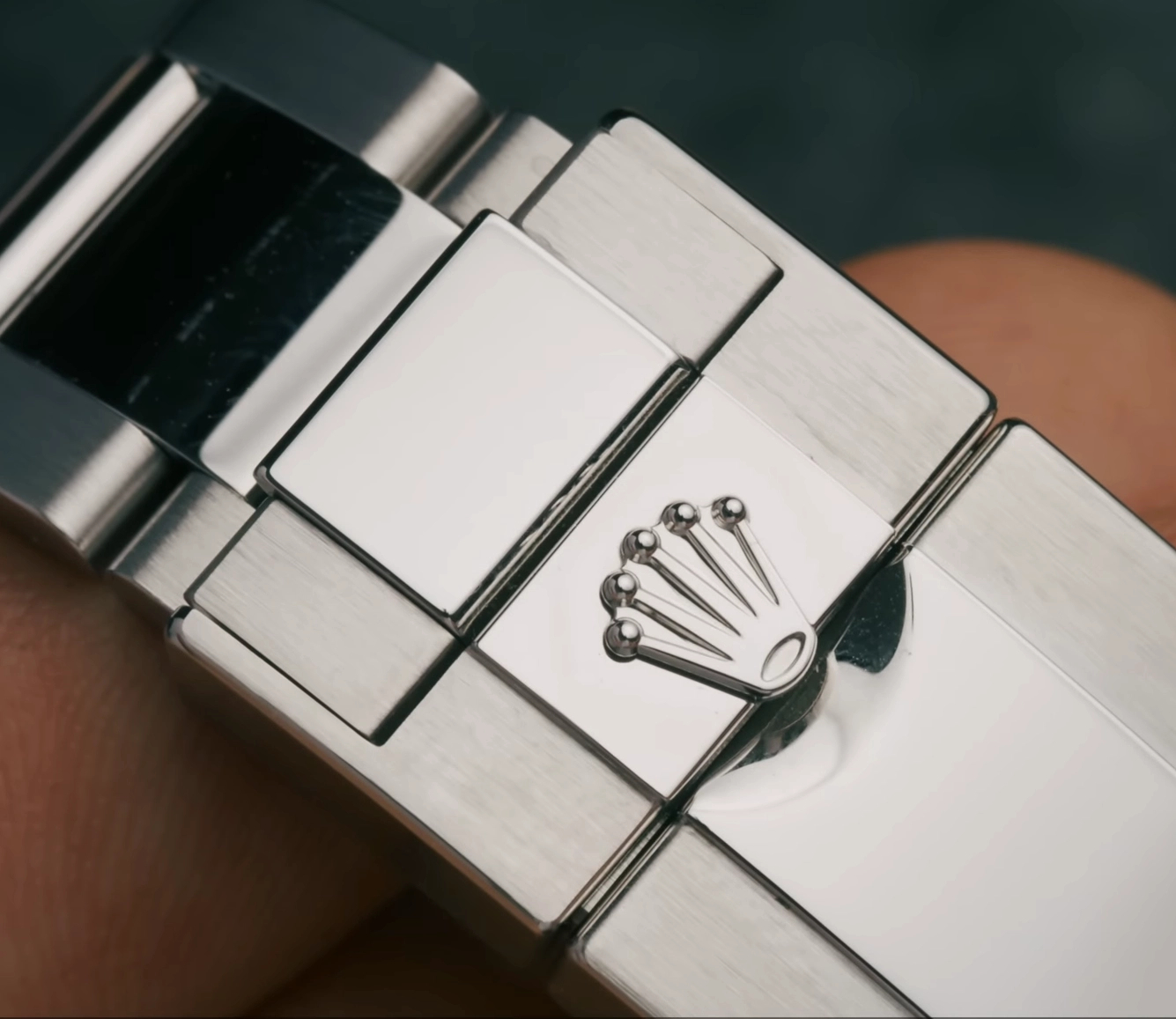
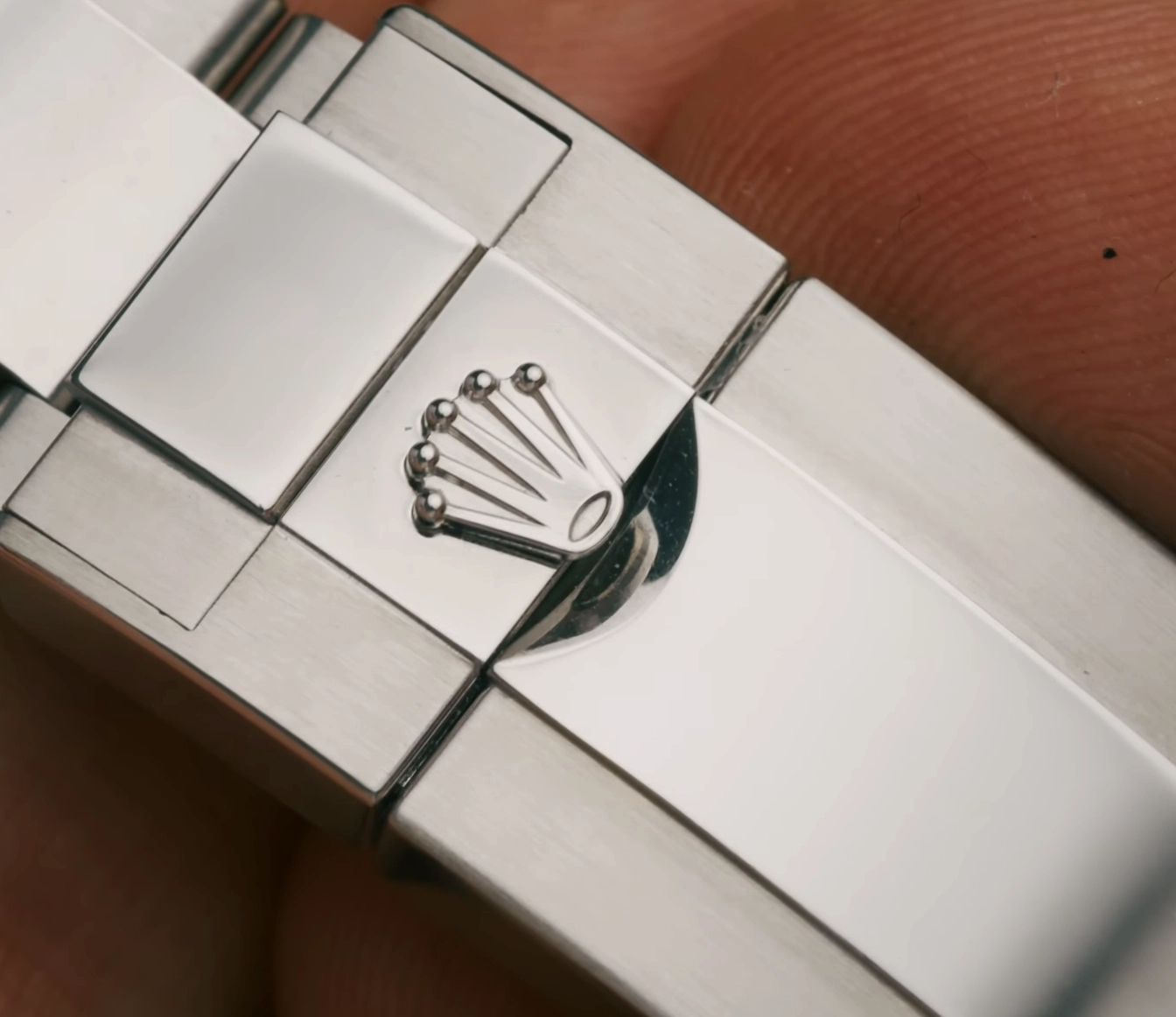
Did you guess right?
We purposely showcased close-up shots emphasizing the subtle distinctions we mentioned earlier—without these, the watches would look almost identical, making it purely a matter of chance to spot fakes.
But here’s another tricky point: even genuine Rolex watches aren’t flawless. Despite Rolex’s renowned precision and craftsmanship, occasional slight imperfections do appear, such as misaligned parts, uneven finishing, or tiny flaws on the case, dial, or hands.
How to Spot a Fake Rolex by Serial Number
Serial Number Check
Every authentic Rolex is engraved with a unique serial number. Prior to 2010, these serials could also help determine the production year. However, since 2010, Rolex uses randomized serial numbers, making date verification impossible through this method.
How to Verify:
-
Locate the serial number, typically found between the lugs on the side of the case.
-
Search the serial number on Google using quotation marks (e.g., "Z754008") for exact match results.
-
If the same serial number appears in multiple listings or discussions—especially across different Rolex models—that’s a strong indicator of a counterfeit.
Example:
A search for "Z754008" returns listings for both a Submariner Black and a Two-Tone model, clearly signaling a fake.
Note: Absence of a serial number online does not guarantee authenticity. Some replicas use numbers not listed publicly.
Replica Serial Numbers: Budget vs. Superclone
Budget replicas frequently reuse identical serial numbers on multiple watches to cut costs.
Premium Superclone Rolex replicas (including those from SwissReplicaClub) often employ unique or limited-run serials to closely imitate genuine Rolex practices.
⚠️ Important: While our Superclone Rolexes feature unique serials, we do not support selling replicas as authentic watches. Our replicas are crafted for personal enjoyment and appreciation only. Please respect the brand and avoid deception.
Fun Fact:
Between 1987 and 1990, Rolex inserted the letters "RLX" (dropping the "O" to avoid confusion with zero) within their serial number sequences.
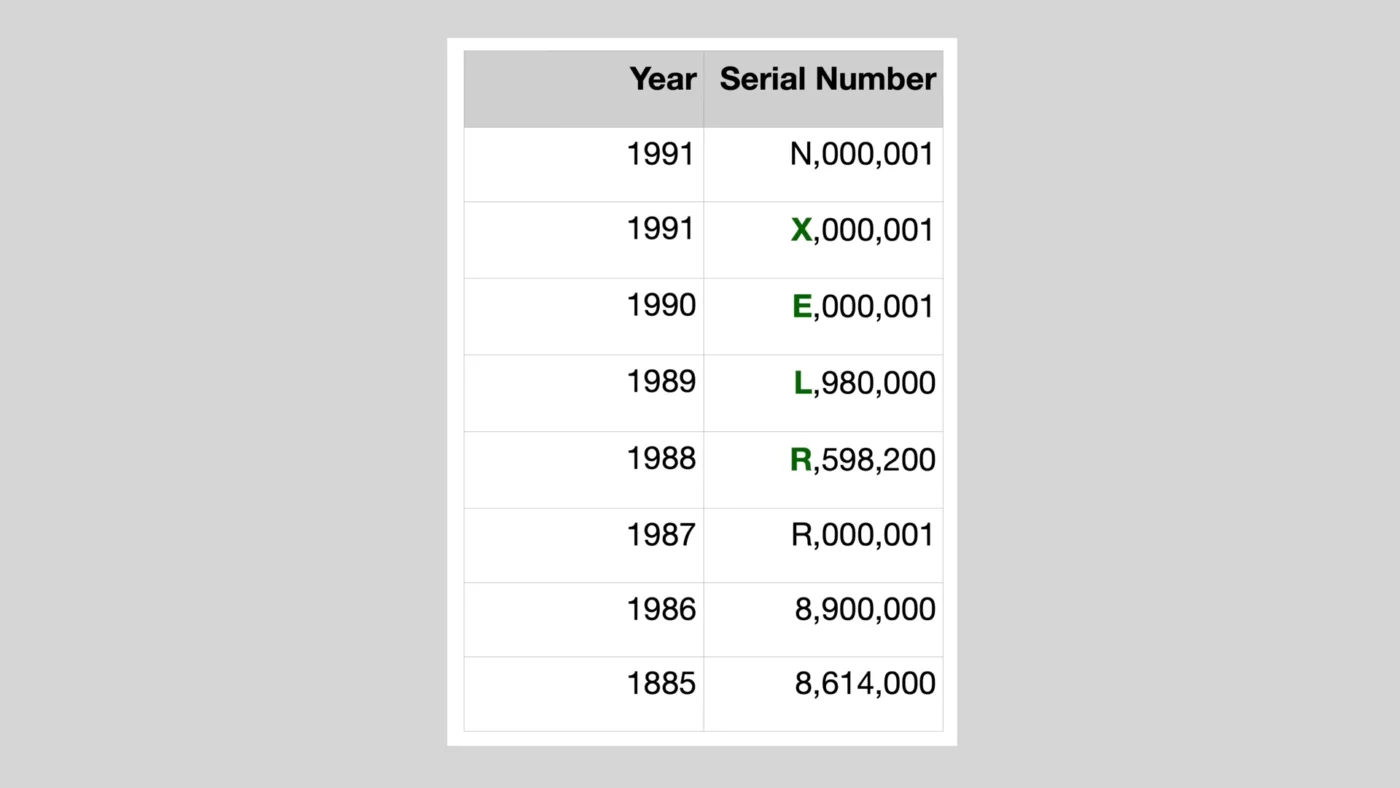
The location of a Rolex's serial number depends on its age:
-
Vintage Rolex (Pre-2005): The serial number is engraved between the lugs at the 6 o'clock position. You'll need to remove the bracelet to see it.
-
Modern Rolex (2005-Present): Rolex moved the serial number to the rehaut (the inner rim of the dial) at 6 o'clock. This "rehaut engraving" is visible without removing the bracelet.
Note: Transitional models from 2005-2008 may have the serial number in both locations as Rolex phased in the new system.
This rewrite improves clarity and flow while maintaining all key information. The bullet points make it easier to scan, and the added note about transitional models provides helpful additional context for collectors.
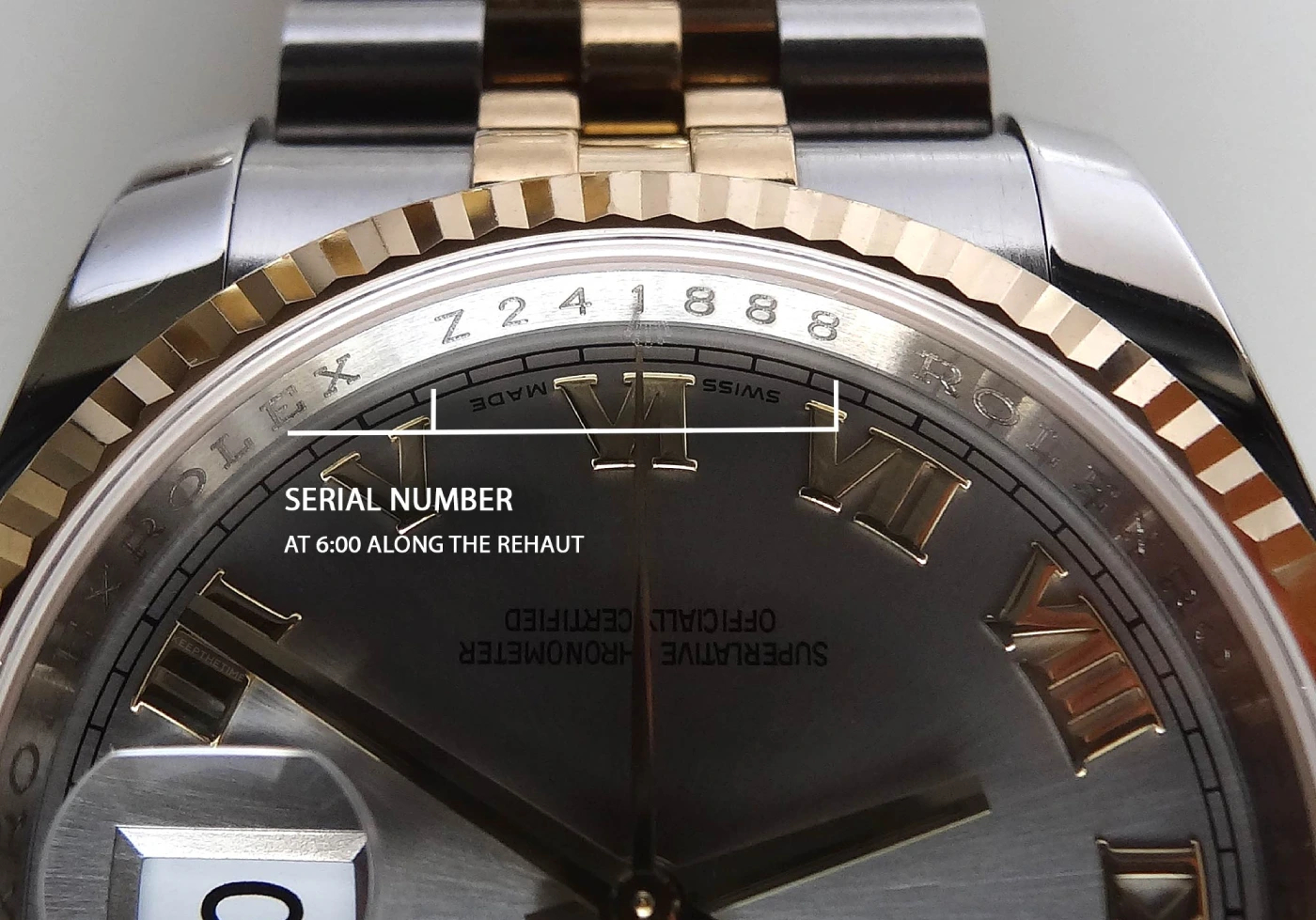
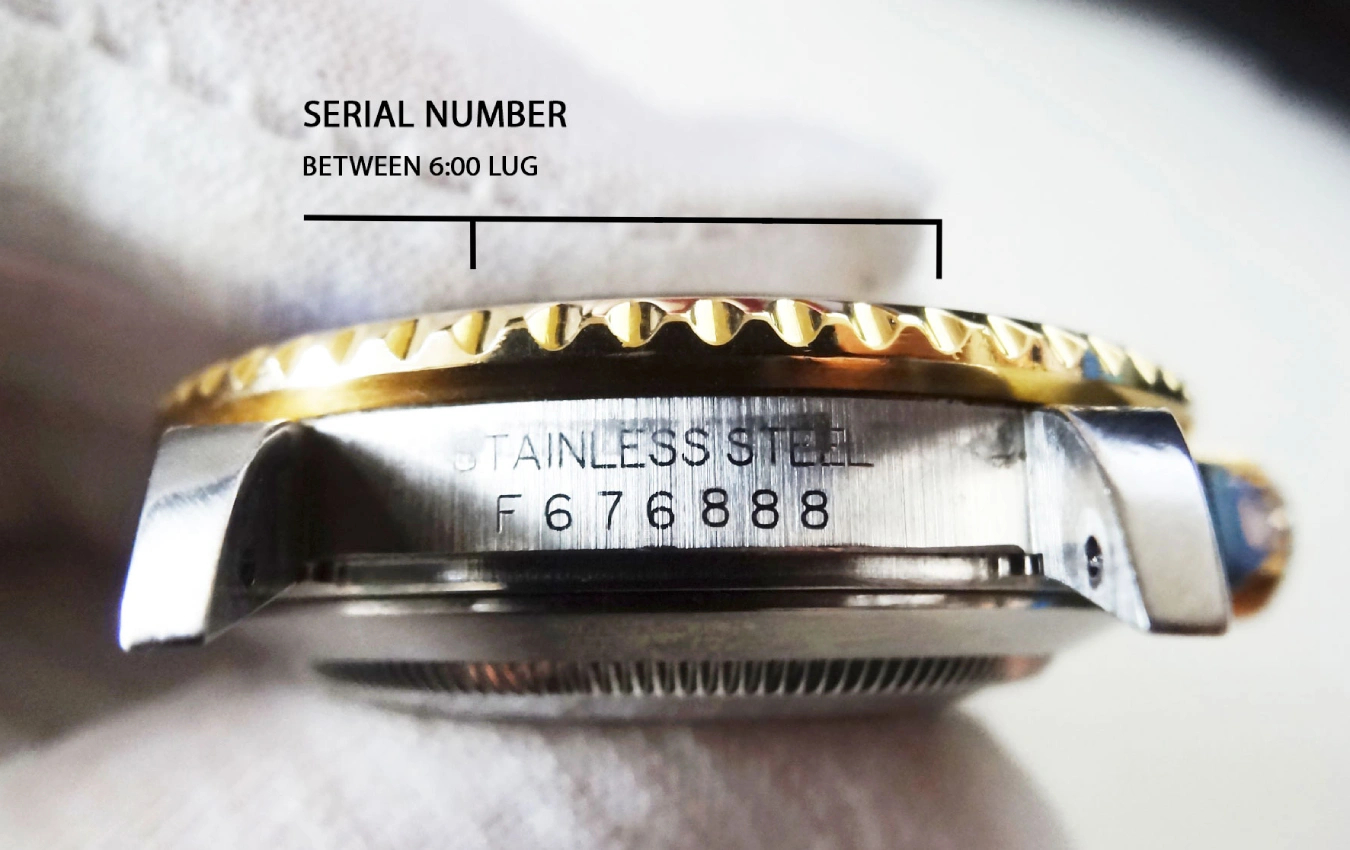
The Rolex Cyclops: A Clear Indicator of Authenticity
The Cyclops lens, magnifying the date display, stands out as one of Rolex’s signature design elements—and one of the toughest features for counterfeiters to replicate flawlessly. Here’s what distinguishes a genuine Rolex Cyclops:
Accurate 2.5x Date Magnification
Authentic Rolex watches, such as the Submariner, magnify the date by exactly 2.5 times, ensuring the date is prominently displayed and perfectly sized within the date window.
Crystal-Clear Date Display
-
No distortion or warping of the date numbers
-
Crisp, sharp edges with no fuzziness
-
Perfectly centered and aligned within the window
Sophisticated Anti-Reflective Treatment
Rolex applies an almost invisible anti-reflective coating under the Cyclops lens. Many replicas either:
-
Lack this coating altogether, causing unwanted glare
-
Use cheaper coatings that produce a faint blue or purple hue at certain viewing angles
Why Replicas Struggle
Lower-quality fakes often fail to achieve correct magnification (usually under-magnified) or use inferior materials that blur or distort the date. Even some high-end “super clones” miss subtle yet important details like proper anti-reflective coatings.
Pro Tip: Tilt the watch under bright light. A genuine Rolex Cyclops maintains perfect clarity without color shifts, while most replicas show distortion or unusual tinting.
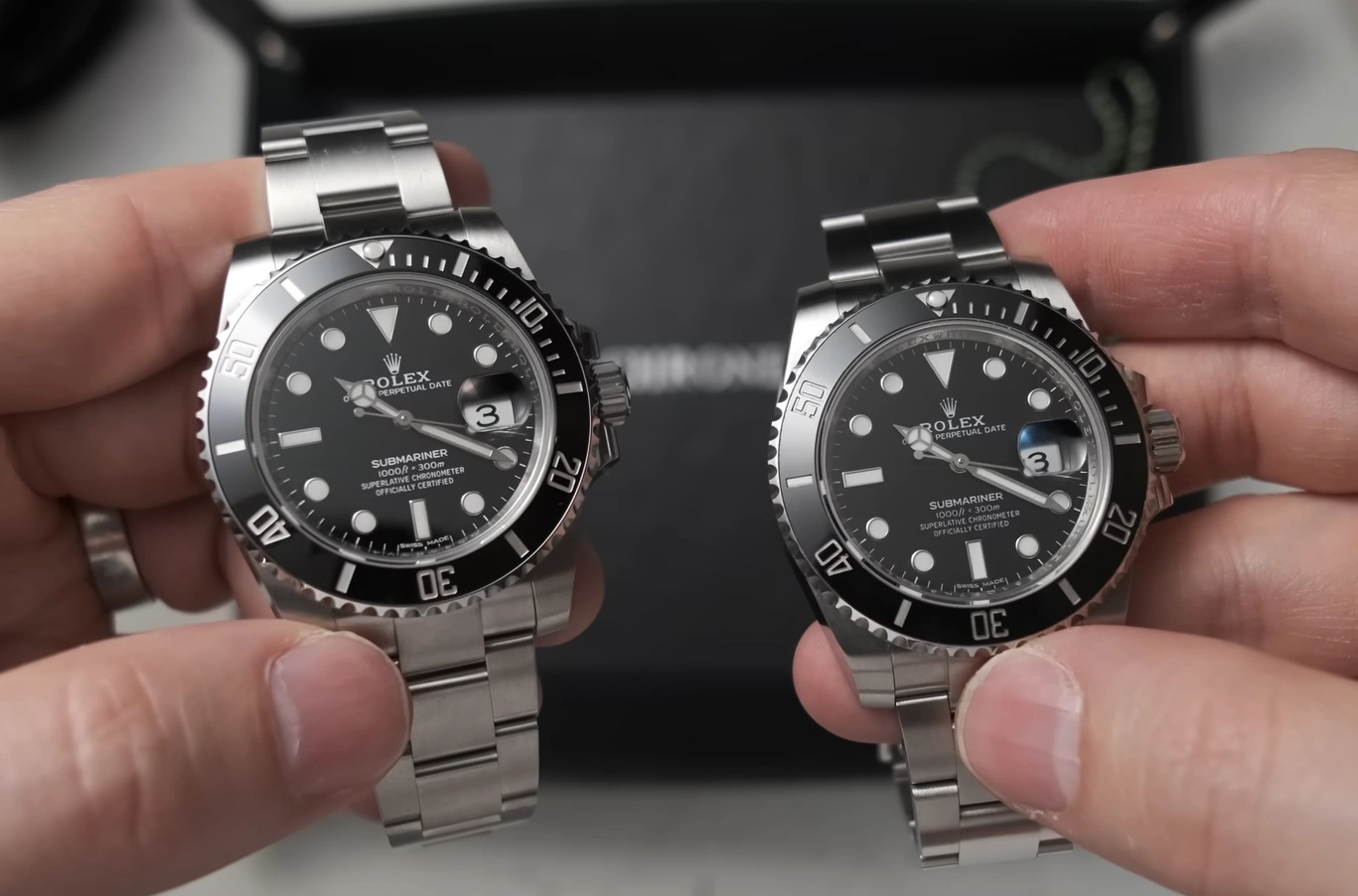
For the date font itself, to verify it you would need an authentic watch to compare side by side. Usually the font is pretty much the same, however, under detailed inspection, some numbers might have giveaways, like this peak in this particular number 3.
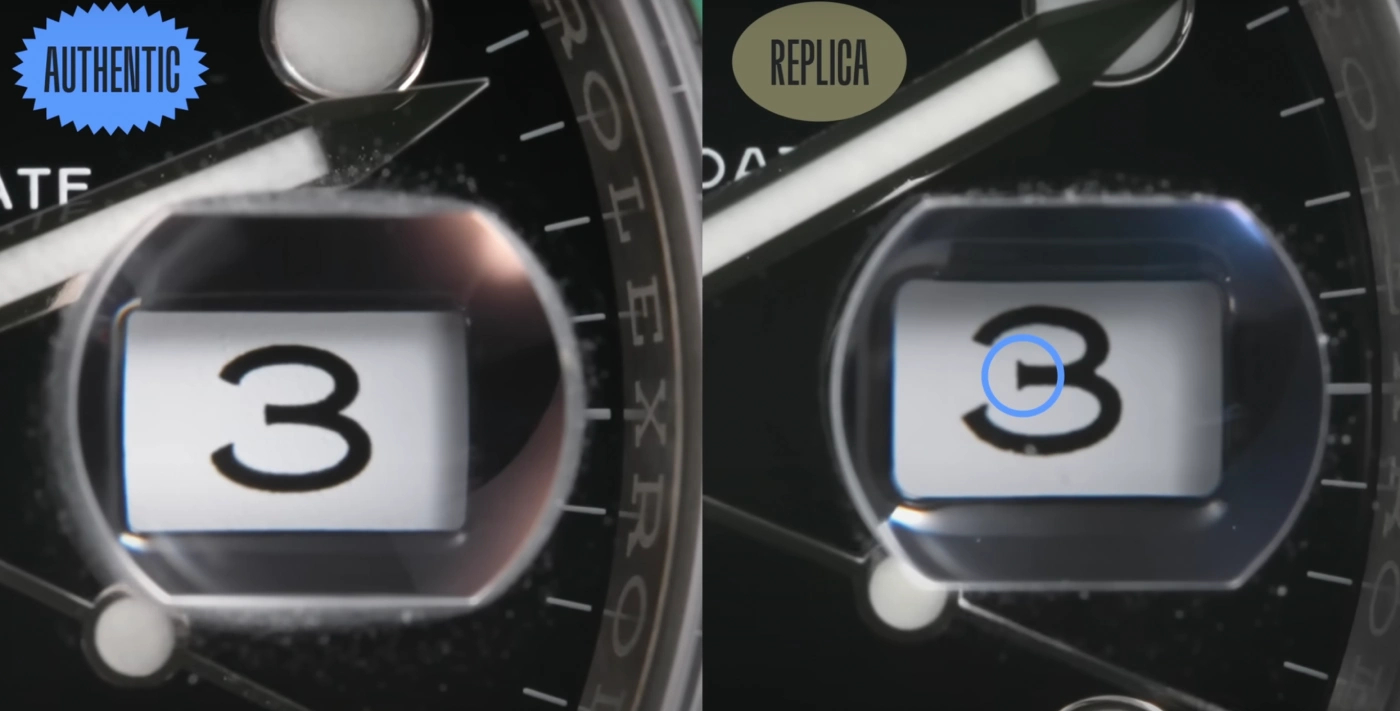
The Rolex Laser-Etched Crown: A Microscopic Authentication Detail
One of Rolex’s most advanced security features is the tiny laser-etched crown logo positioned at 6 o’clock on the sapphire crystal. This almost invisible mark distinguishes genuine timepieces from imitations.
Key Characteristics:
-
Created with high-precision laser technology
-
Nearly invisible to the naked eye
-
Only visible under magnification (10x or more) or when viewed at a specific angle
-
Made up of microscopic dots at varying depths within the crystal, not a solid line
How to Detect a Fake:
-
Absent Mark: Most budget replicas skip this detail entirely
-
Poor Imitation: Mid-range fakes often:
-
Use simple engraving instead of laser etching
-
Feature a crown that’s overly large or obvious
-
Lack the intricate multi-depth dot pattern
-
-
Overly Visible: Some high-end replicas include the crown but make it too prominent
Verification Tips:
-
Use a jeweler’s loupe with at least 10x magnification
-
Shine a bright light at a sharp angle to the crystal
-
Look for:
-
A perfectly shaped tiny crown
-
A subtle dot-matrix pattern inside the crystal
-
No surface scratches (true etching is embedded within the crystal)
-
Why This Matters:
This laser-etched crown showcases Rolex’s dedication to precision and anti-counterfeiting. The complex dot-matrix technique requires specialized equipment that counterfeiters usually cannot replicate accurately.
Pro Tip: If the crown is clearly visible without magnification, it’s probably fake. The authentic mark is meant to be discovered with proper tools—not easily spotted.
This version maintains all technical details while improving organization and readability. The bullet points and clear sections make the information more digestible, and the added "Why It Matters" section reinforces the significance of this authentication feature.
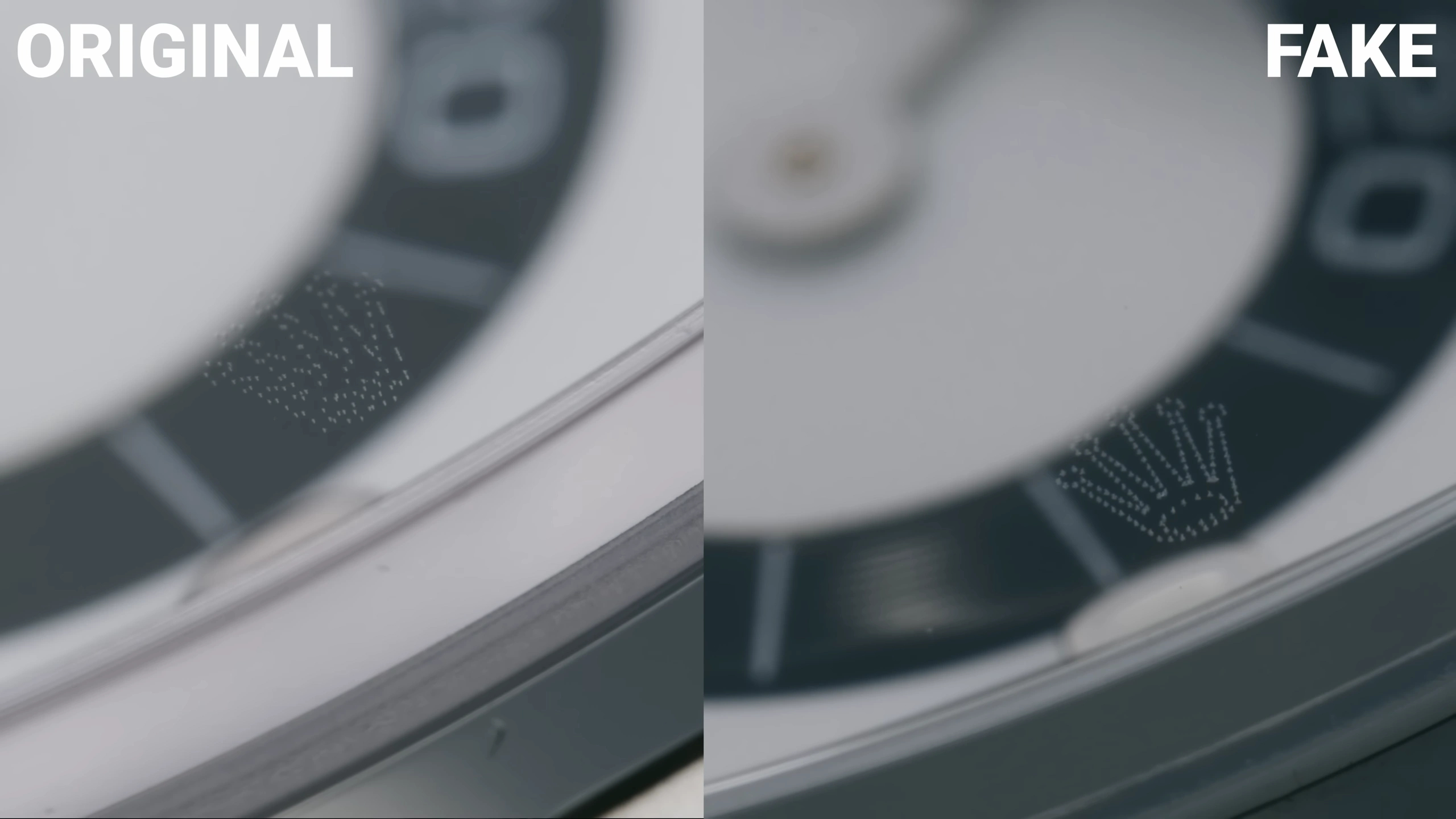
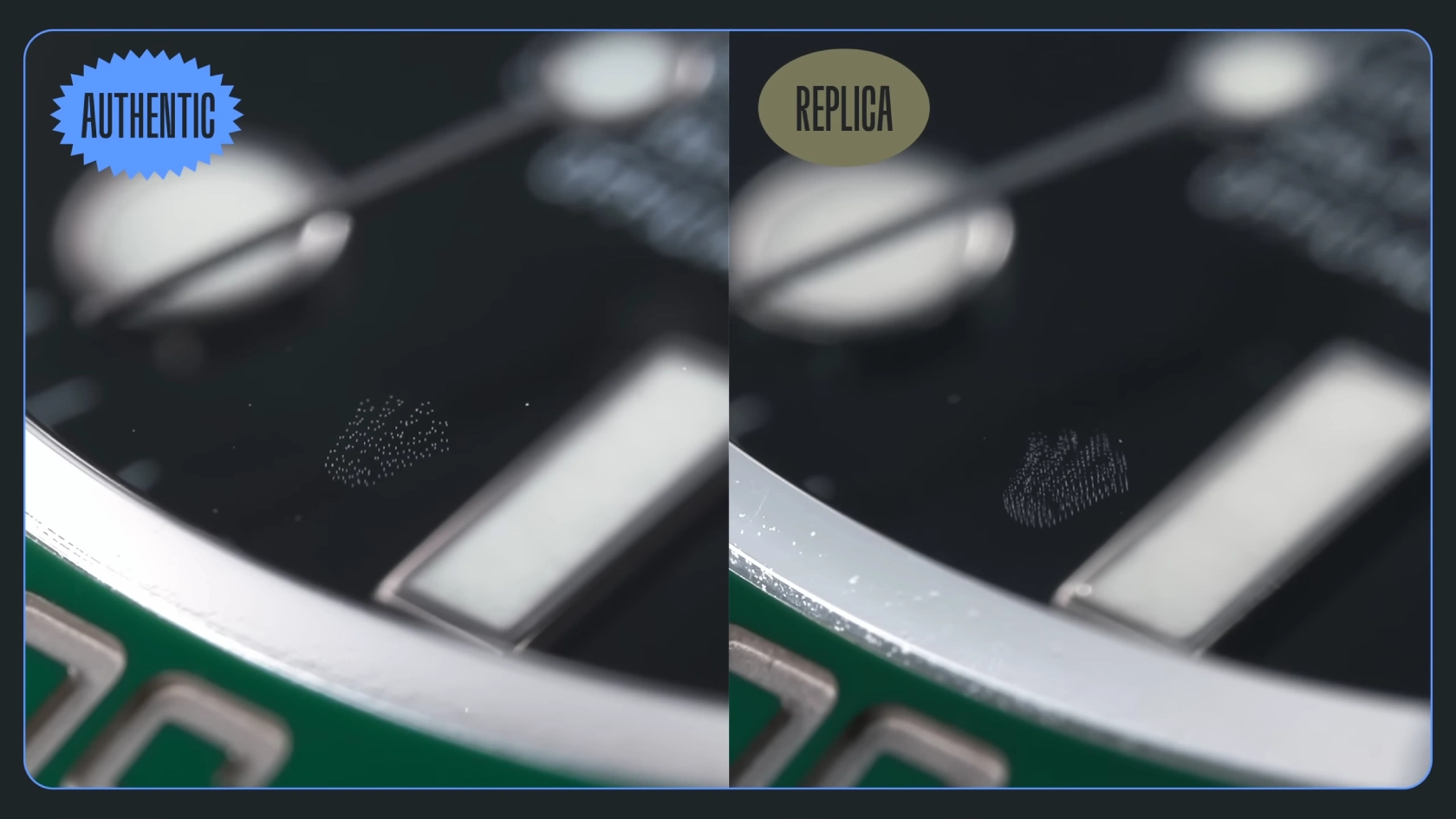
The Rolex Rehaut: Excellence in Precision Engraving
The rehaut—the narrow inner ring between the dial and the crystal—is one of Rolex’s most sophisticated features. Here’s how to identify an authentic Rolex rehaut:
Key Authentication Features
-
Laser-Precise Engraving
Genuine Rolex watches have the word "ROLEX" laser-etched with microscopic accuracy: the letters are sharp, uniformly spaced, and perfectly aligned. -
Common Fake Signs
-
Engraving that is uneven, overly deep, or sloppy
-
Thick, dark lettering lines indicating low-quality laser work
-
Misaligned text or crown logo on the rehaut
-
-
Correct Placement
-
At 12 o’clock: Rolex crown emblem
-
At 6 o’clock: Serial number (present on modern models)
-
All engravings are centered and evenly spaced
-
Historical Context
Older Rolex models may not feature rehaut engraving. Since the mid-2000s, Rolex has made this detail a standard anti-counterfeiting measure.
How to Verify
-
Use a macro lens or loupe (10x magnification or higher)
-
Examine the sharpness and depth of the engraving
-
Check for any spacing or alignment inconsistencies
-
Compare side-by-side with known authentic examples
Pro Tip: If the engraving appears overly bold or crude under normal lighting, it’s likely counterfeit. Rolex’s engraving is subtle, designed to be detected up close—not glaringly obvious.
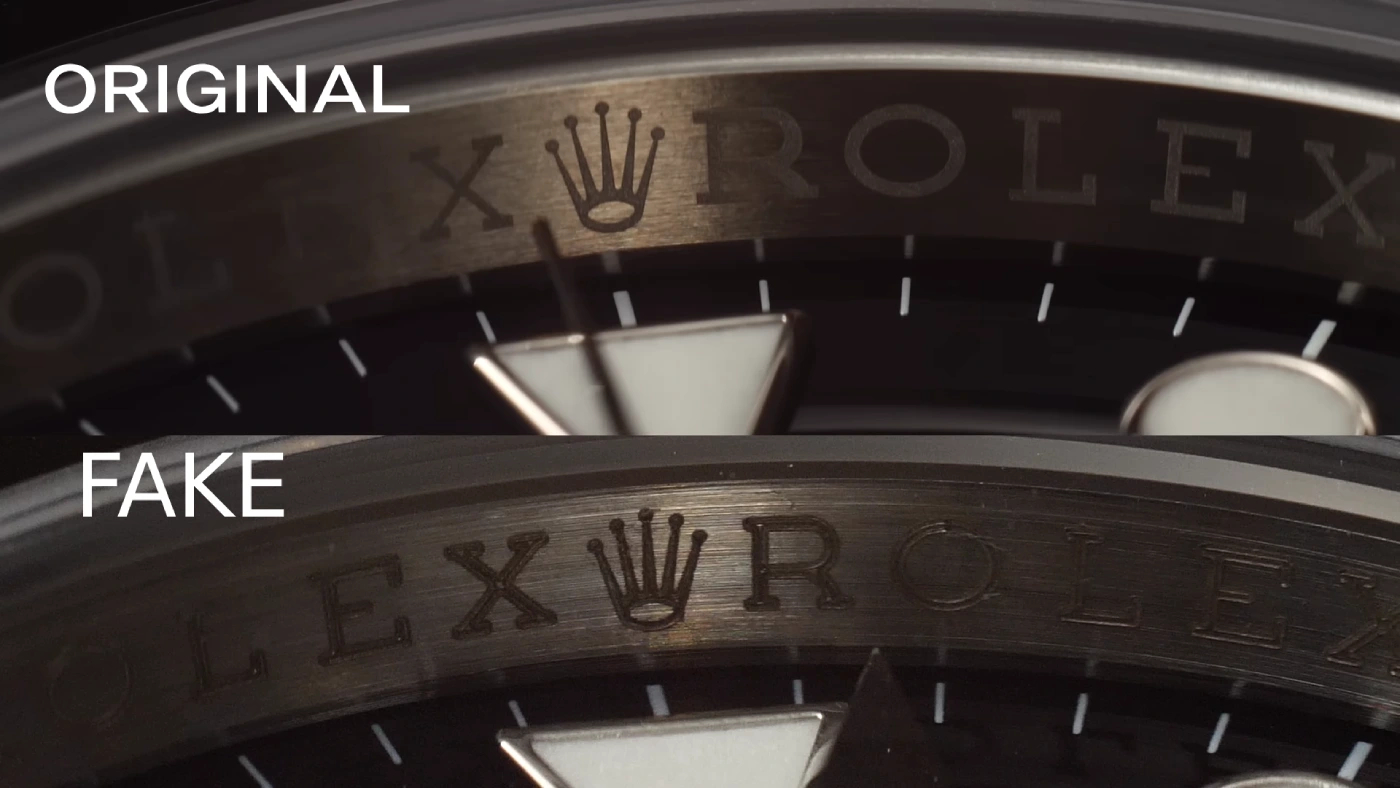
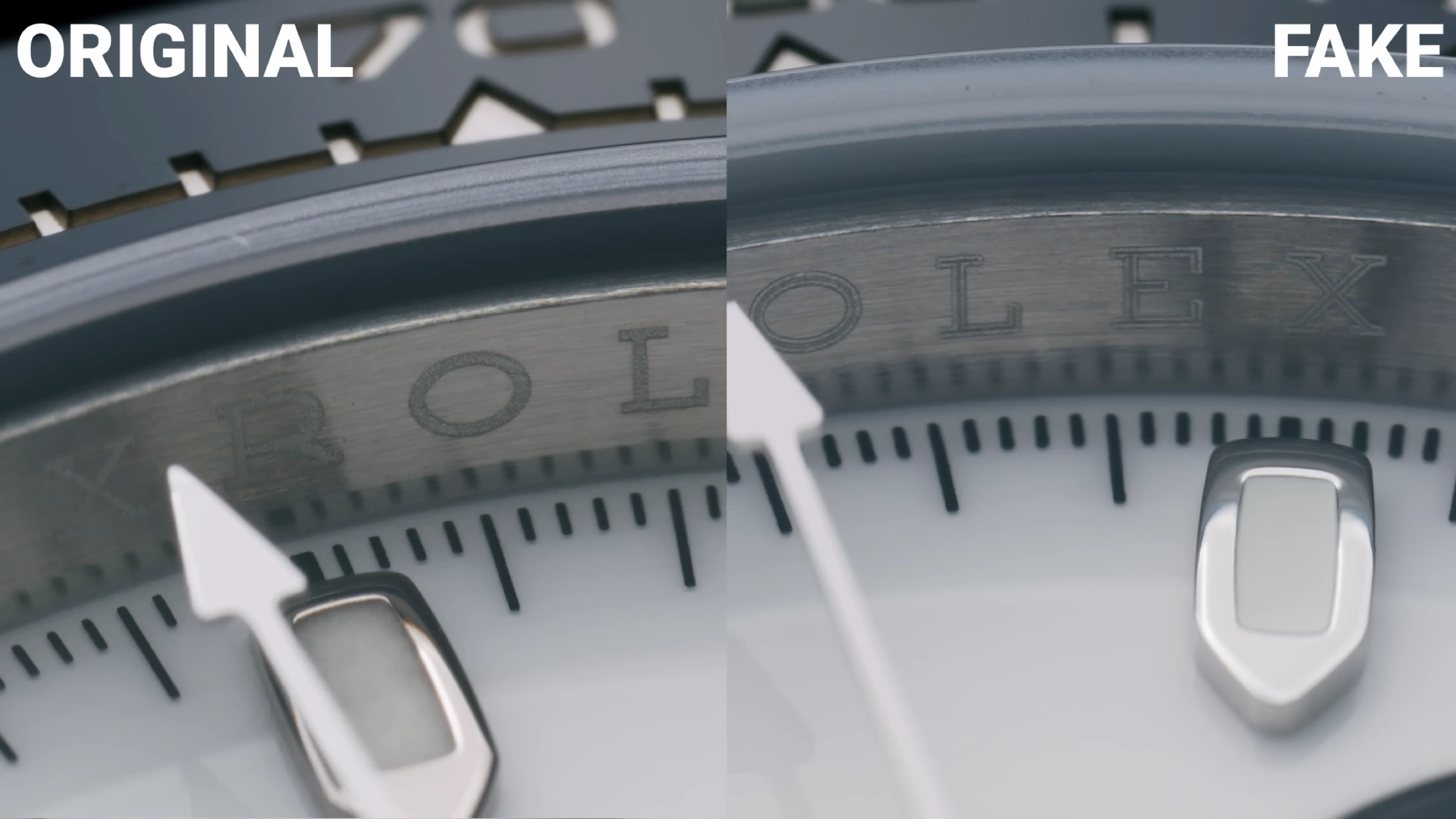
Another thing to look out for is, on the right-hand side of the dial, one o’clock down to five o’clock, the “X” of “Rolex” is going to line up with the hour markers. On the left-hand side of the dial, so seven o’clock up to 11 o’clock, the “R” of “Rolex” is going to line up with the hour markers. Sometimes, even higher-end superclones get the positioning wrong.

Rolex Finishing: The Devil's in the Details
Rehaut Engraving Timeline
-
Pre-2004 Models: No rehaut engraving present
-
2004 Onward: Laser-etched "ROLEX" text and serial number added as standard
The Art of Rolex Finishing
-
Brushed Surfaces
-
Genuine Rolex watches feature ultra-fine, perfectly parallel brushing
-
Even high-end superclones struggle to perfectly replicate:
-
The exact grain consistency
-
Uniformity across all brushed surfaces
-
-
Most noticeable difference: Clasp brushing (requires magnification to spot)
-
-
904L Steel Challenges
-
While both genuine and premium replicas use 904L steel:
-
Rolex's proprietary finishing techniques create smoother surfaces
-
Replicas often show slightly coarser grain under magnification
-
-
-
Polished Surfaces
-
Should be mirror-perfect with no visible tool marks
-
Common replica flaws:
-
Microscopic waviness in polished areas
-
Uneven bevel edges
-
-
Authentication Tips
-
Use 10x magnification to examine brushing patterns
-
Compare to an unworn genuine piece (wear alters finishing over time)
-
Focus on the clasp - most replicas show subtle imperfections here
Pro Tip: Run your fingernail across brushed surfaces - genuine Rolex finishing feels like ultra-fine silk, while even good replicas often feel slightly grainier.
This version organizes the information more clearly while maintaining all technical details. The addition of a tactile authentication method (fingernail test) provides a practical verification technique beyond visual inspection.
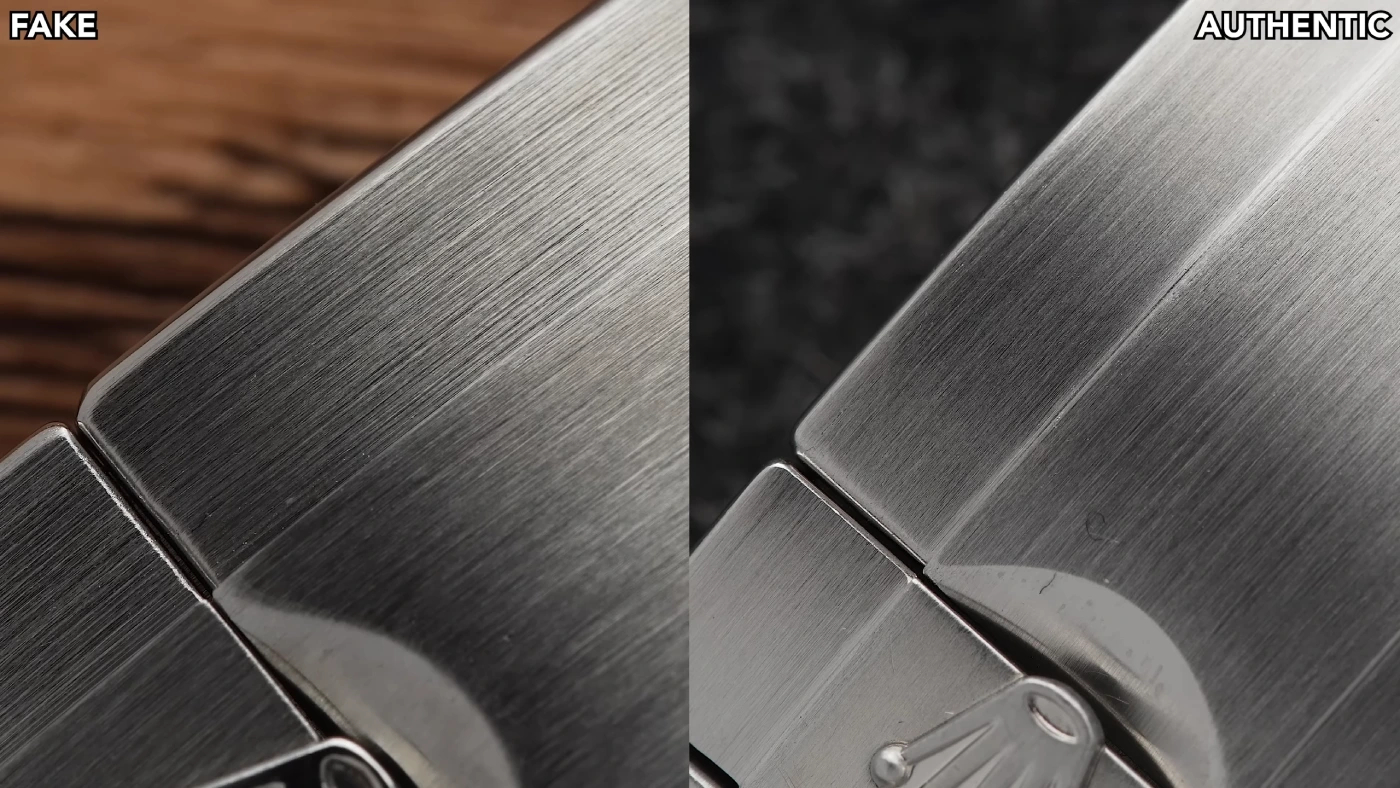
Note, that this photo is done using an ultra macro lens, for the purpose of comparison, here is a photo of two buckles from an authentic and Replica Rolex Daytona.
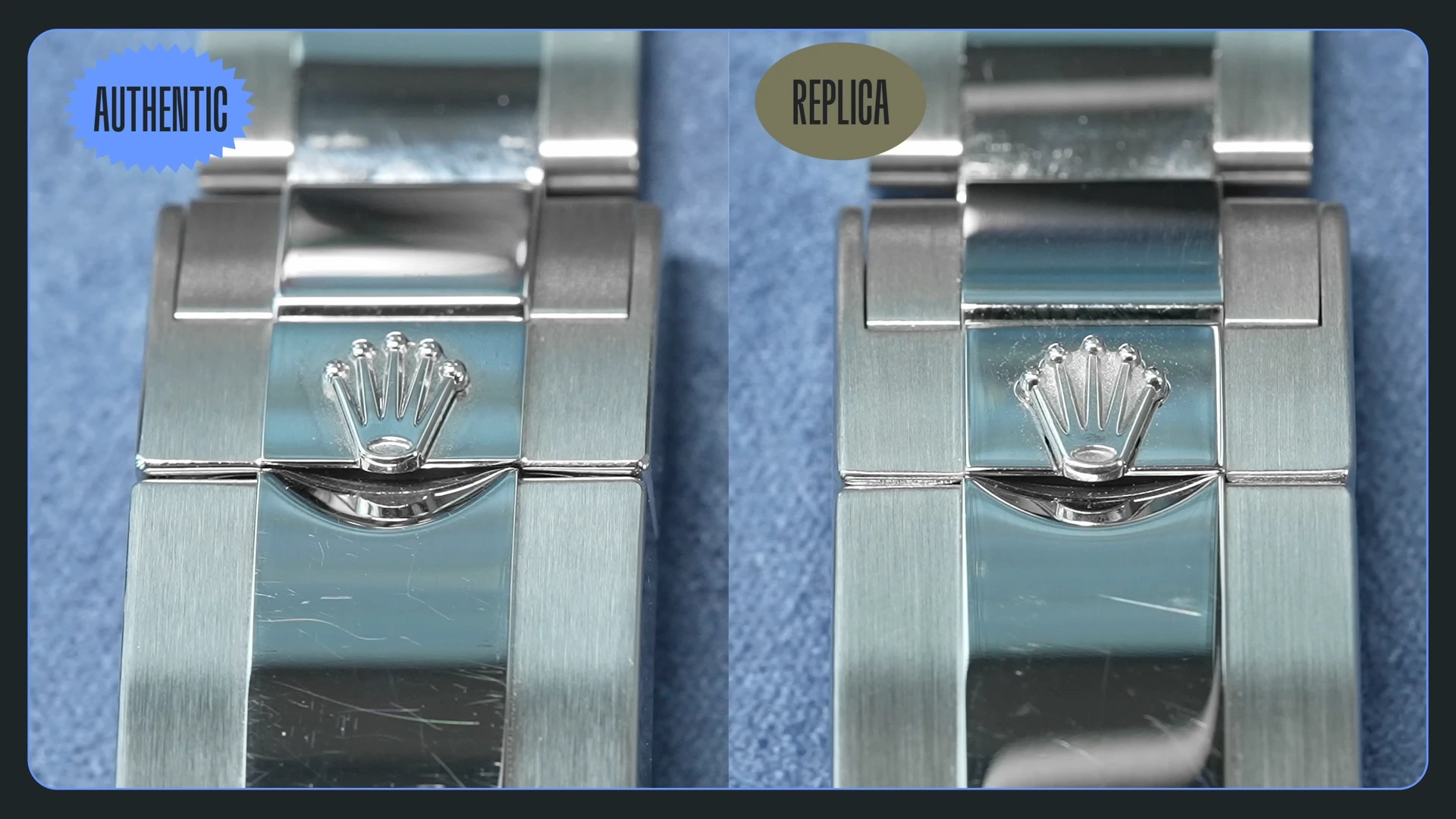
Inside a Replica Rolex: Understanding the Movement
When it comes to high-quality Rolex replicas, the watch movement is where the biggest challenges and price differences lie. Here's a breakdown of the common movement types found in replicas:
Movement Categories in Replica Watches
-
Entry-Level Movements (Miyota / Chinese Clones)
-
Typical examples: Japanese Miyota 8205/8215, Chinese Clone 2813
-
Advantages: Affordable and generally reliable timekeeping
-
Drawbacks:
-
Noticeable rotor noise
-
Rough finishing visible under close inspection
-
Rotors may be decorated to resemble Rolex but reveal themselves as fake upon scrutiny
-
-
-
Mid-Tier Movements (Swiss ETA)
-
Used in better-quality replicas
-
Advantages:
-
Swiss craftsmanship provides improved reliability
-
Smoother operation compared to entry-level movements
-
-
Limitations:
-
Not an exact Rolex clone; different internal design
-
May lack Rolex-specific components such as the Parachrom hairspring
-
-
-
Superclone Movements (VR/VF Factory)
-
Closest visual and functional replicas of genuine Rolex calibers (e.g., VR3135, VS3235)
-
Features replicated balance wheels, bridges, and rotors
-
Benefits:
-
Nearly indistinguishable from authentic Rolex movements to the naked eye
-
Enhanced power reserve and improved accuracy
-
-
Drawbacks:
-
Finishing may be slightly less refined under magnification
-
Long-term durability remains unproven compared to Swiss originals
-
-
Why Movement Quality Matters Even with Closed Casebacks
-
Accuracy: Higher-grade movements keep time more precisely
-
Rotor Noise: Cheaper movements tend to be loud; superclones operate quietly
-
Power Reserve: Premium replicas often mimic Rolex’s extended 70-hour reserve
Our Position on Replica Movements
We emphasize replicas should never be sold as genuine watches. This information is for educational purposes only. While superclone movements approach authenticity closely, small differences remain in:
-
Finishing quality (less polished when viewed up close)
-
Components (lack of genuine Rolex materials like Parachrom hairspring)
-
Longevity (Swiss originals last decades; replica lifespan is uncertain)
Final Thoughts:
For a fraction (5-10%) of an original Rolex’s price, high-end replicas deliver impressive value but should be appreciated as respectful tributes—not authentic Rolex timepieces.
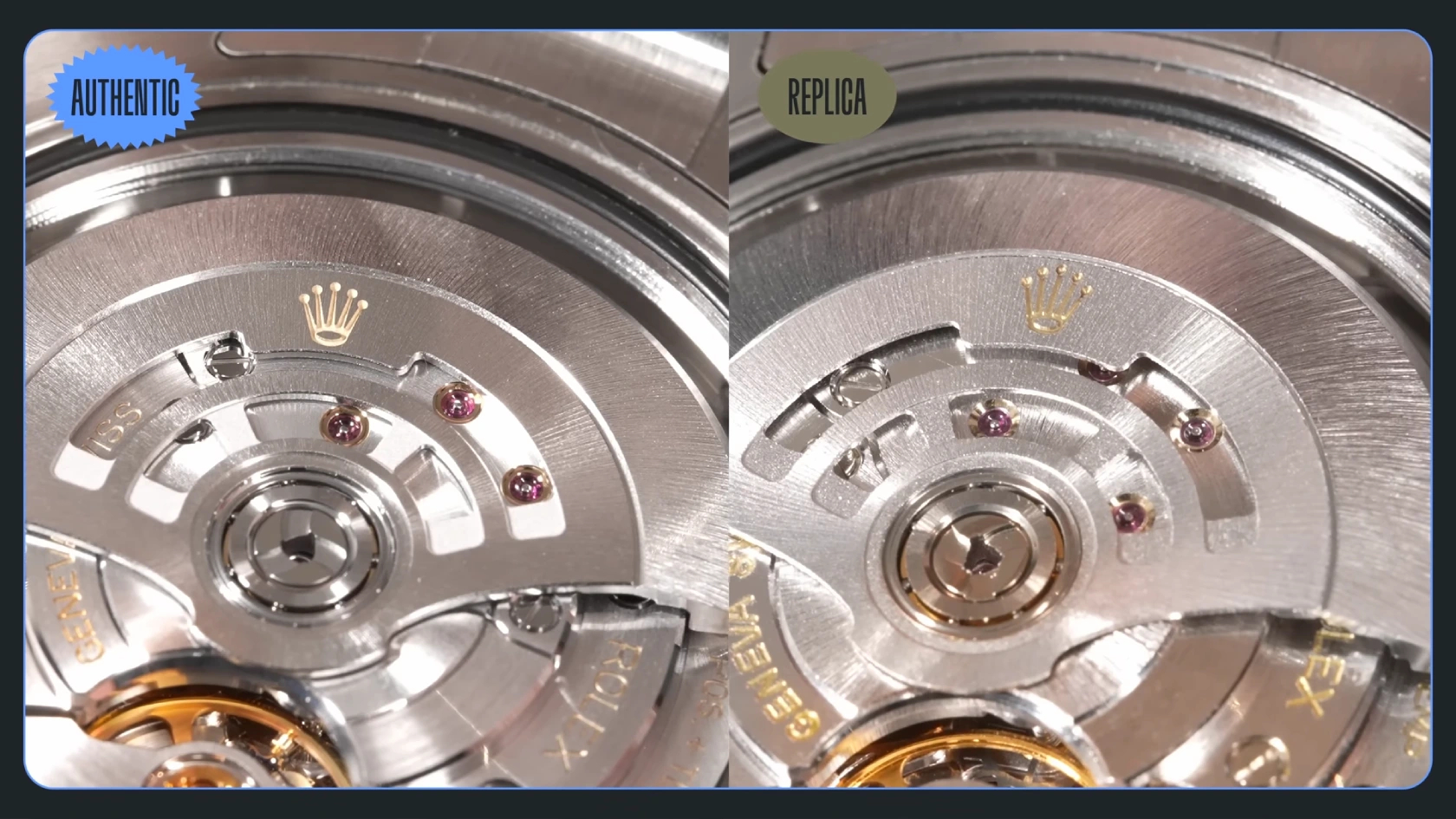

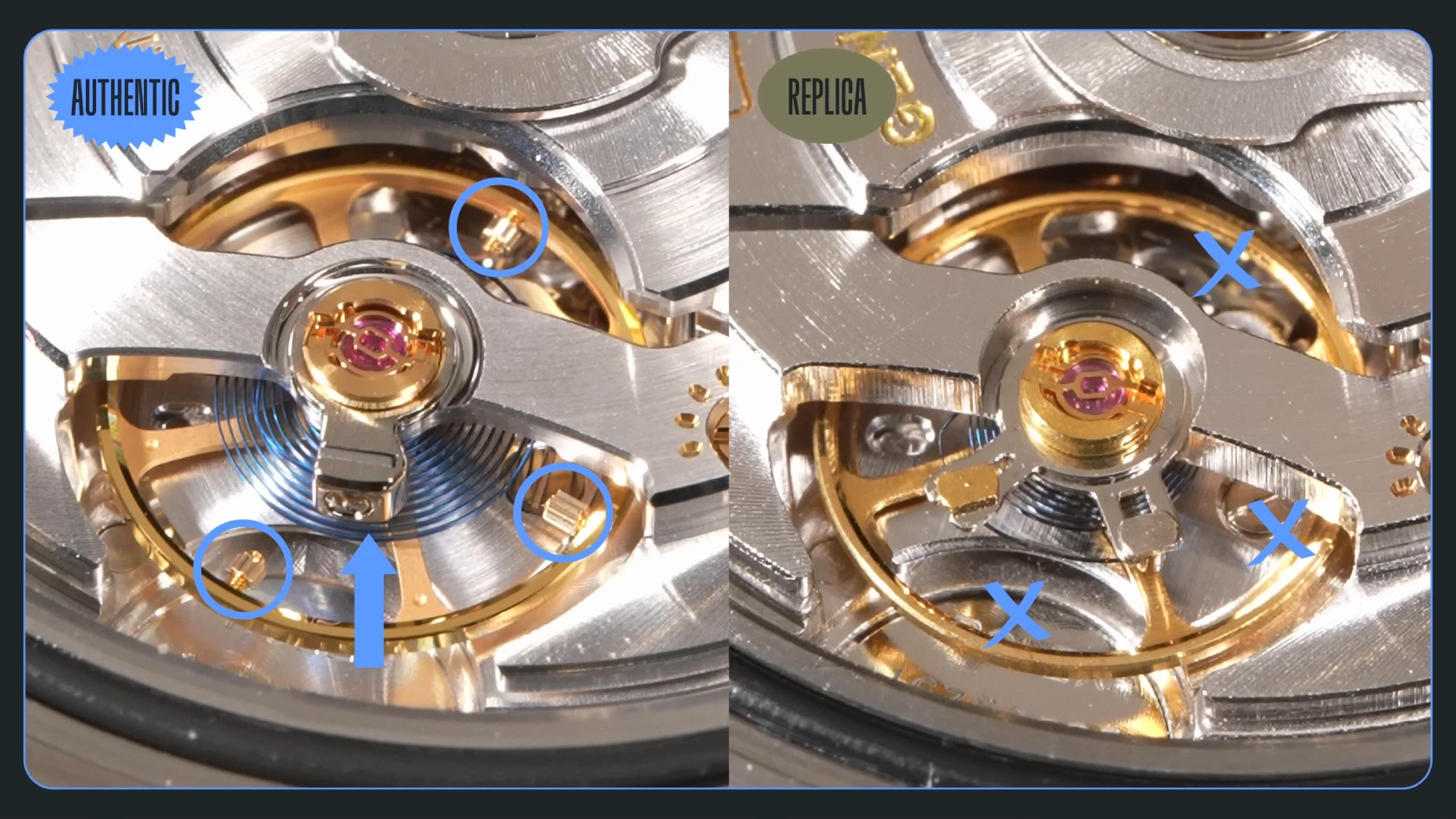
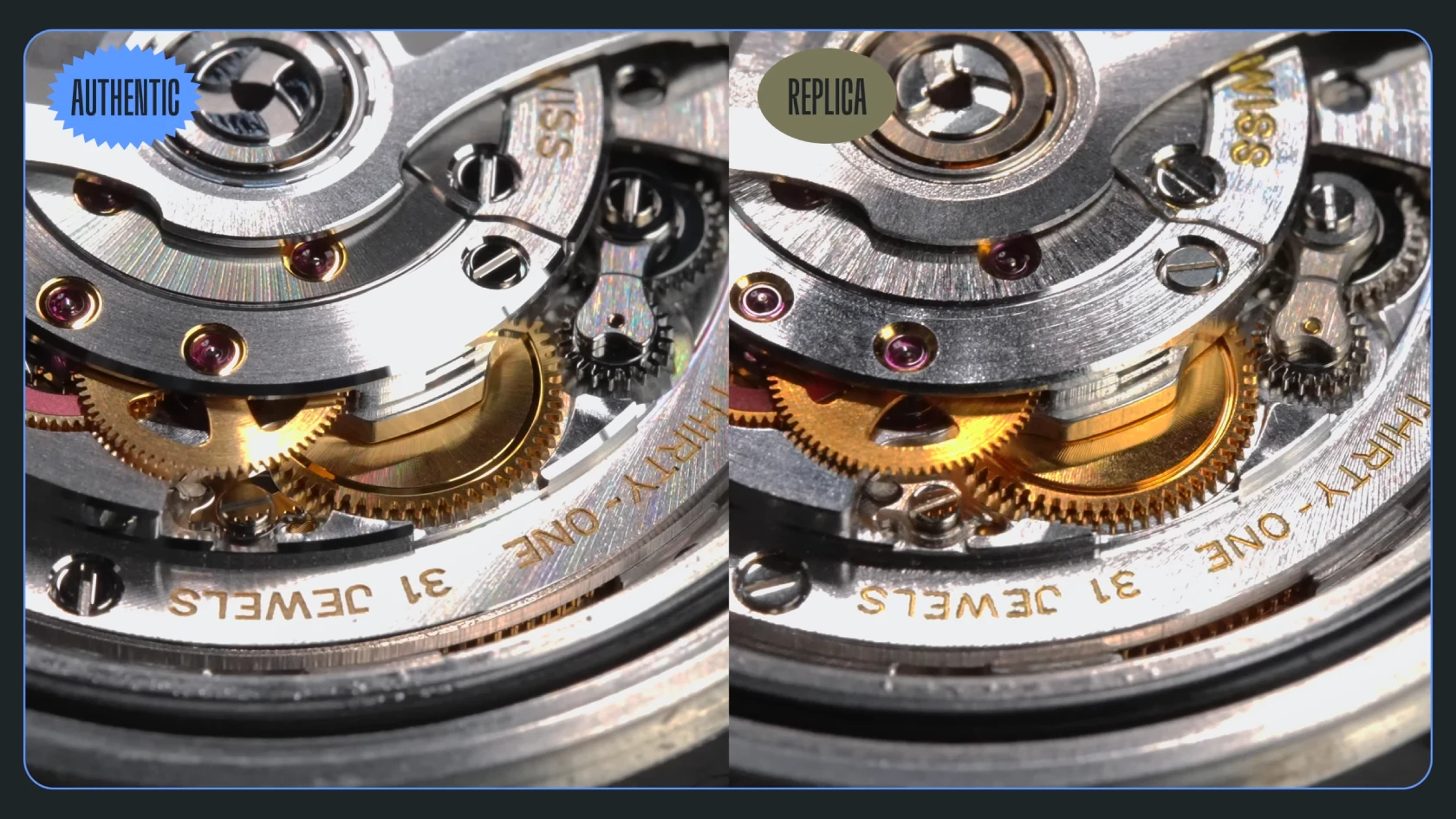
Spotting a Fake Rolex: Steel Quality & Clasp Details
1. 904L vs. 316L Steel – The Rolex Advantage
-
Genuine Rolex: Uses 904L stainless steel, known for:
-
Higher corrosion resistance (especially against saltwater)
-
Superior polish & shine (more lustrous than 316L)
-
Increased hardness (more scratch-resistant)
-
Distinctive weight & feel (denser than standard steel)
-
-
Most Replicas: Use 316L steel (cheaper, softer, less refined)
-
Telltale Signs:
-
Duller finish under light
-
More prone to scratches
-
Slightly lighter weight
-
-
Quick Test: Run your fingernail across the bracelet—genuine 904L steel feels smoother and more refined.
2. Clasp Hook – A Hidden Authentication Point (Newer Submariners)
-
Genuine Rolex:
-
The clasp hook is precision spot-welded (not glued or roughly soldered)
-
Welding points are evenly spaced, flawless, and discoloration-free (Rolex controls heat to prevent tempering marks)
-
-
Fake Rolex:
-
Often shows uneven welding, discoloration, or rough solder marks
-
May have visible glue residue (cheaper replicas skip welding entirely)
-
How to Check:
-
Use a 10x loupe to inspect the clasp hook’s base.
-
Look for uniform spot welds (no burn marks or misalignment).
Why These Details Matter
-
904L Steel = Exclusive to Rolex (even high-end replicas struggle to match its polish & durability).
-
Clasp Welding = A microscopic detail most counterfeiters overlook.
Final Tip:
If the steel feels lightweight or the clasp looks crudely attached, it’s likely a fake. Rolex’s craftsmanship leaves no room for imperfections.
This version keeps the technical accuracy while making it easier to scan with bullet points and clear comparisons. The practical tests (fingernail test, loupe check) help readers verify authenticity themselves.
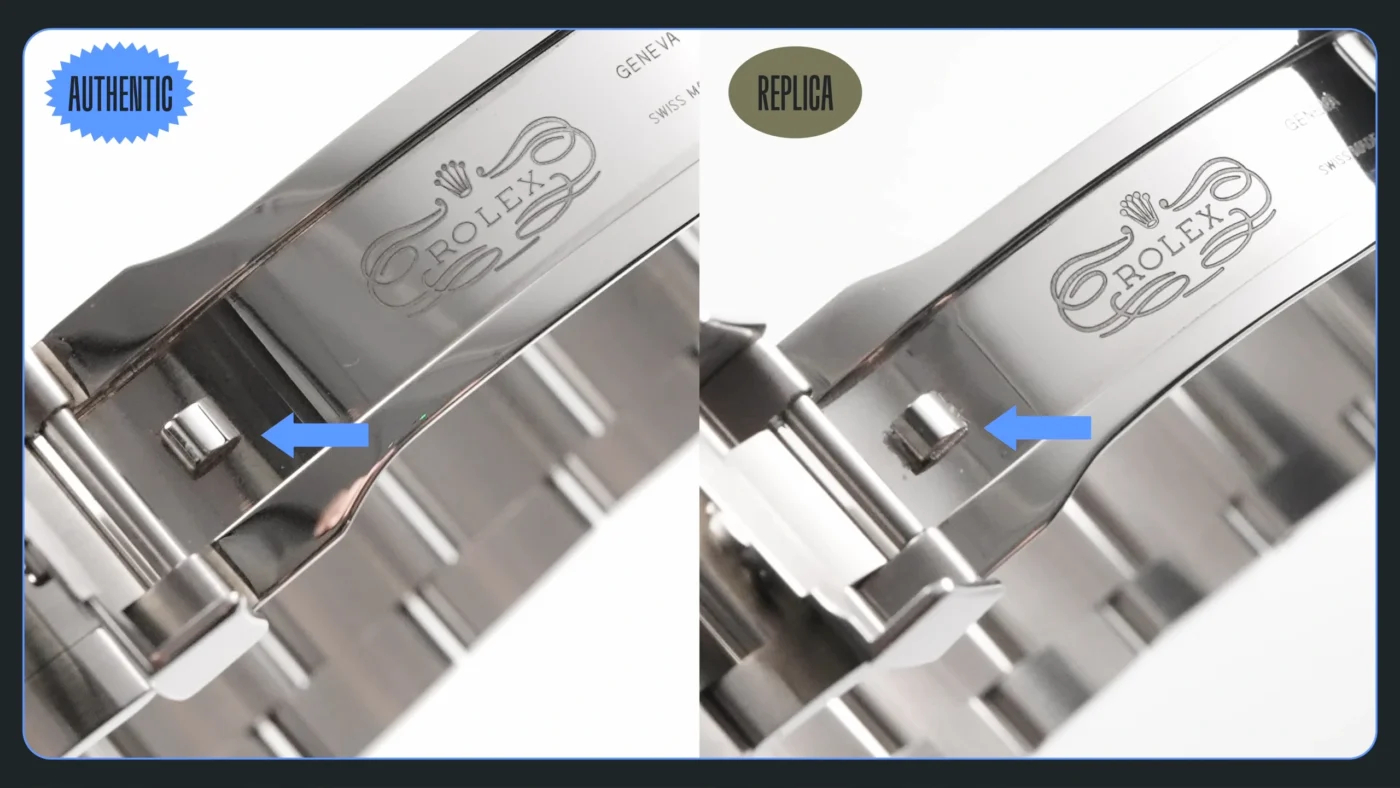
Weight & Size: Can You Tell the Difference?
1. Weight and Dimensions – The First Test
-
Cheap Fakes: Often noticeably lighter or bulkier due to inferior materials.
-
Superclones: Nearly identical to genuine Rolex watches in weight and size, with differences usually under 1-2%.
Example:
A real Rolex Submariner weighs about 155 grams; high-end replicas vary by only 1-2 grams.
Minor discrepancies may result from:
-
Aftermarket servicing causing slight misalignments
-
Added or removed bracelet links
-
Polishing wear over time
Tip: If the watch feels too light, it’s likely fake. However, perfect weight alone does not guarantee authenticity.
Franken Rolex: The Near-Perfect Replica
For those seeking extreme accuracy, Franken Rolexes combine:
-
Replica cases and bracelets
-
Genuine Rolex parts like dials, hands, crowns, or movement components
Why Franken Watches Are Rare:
-
Limited demand, as superclones meet the needs of most collectors
-
High cost and complexity, requiring:
-
Sourcing authentic parts
-
Expert watchmaker assembly
-
-
Legal risks associated with selling replicas as genuine
Our Philosophy
Replicas are intended for personal enjoyment, not deception.
Superclones offer 95-97% accuracy at 5-10% of the original price.
Unless you’re a professional watchmaker, it’s difficult to detect the difference.
Find Your Ideal Rolex Replica
Browse our catalog for 1:1 superclone replicas—luxury craftsmanship without the luxury price.
Remember:
No replica is completely perfect, but the best are closer than ever.
Buy for passion, not fraud. Rolex’s true value lies in its heritage, not just its materials.


 USD
USD











































































